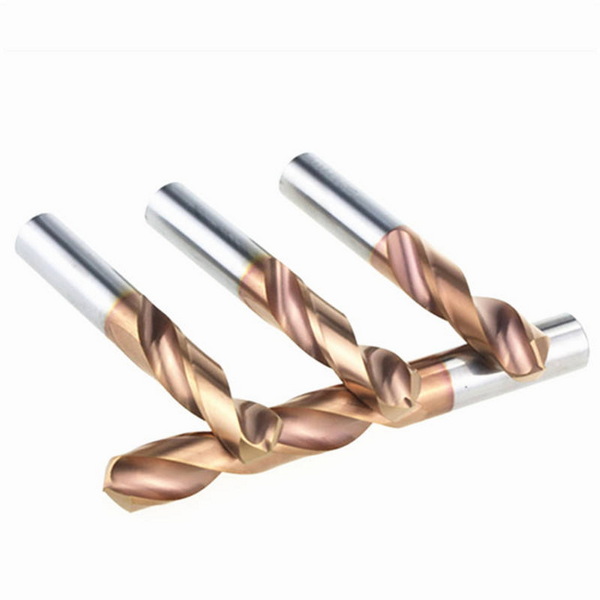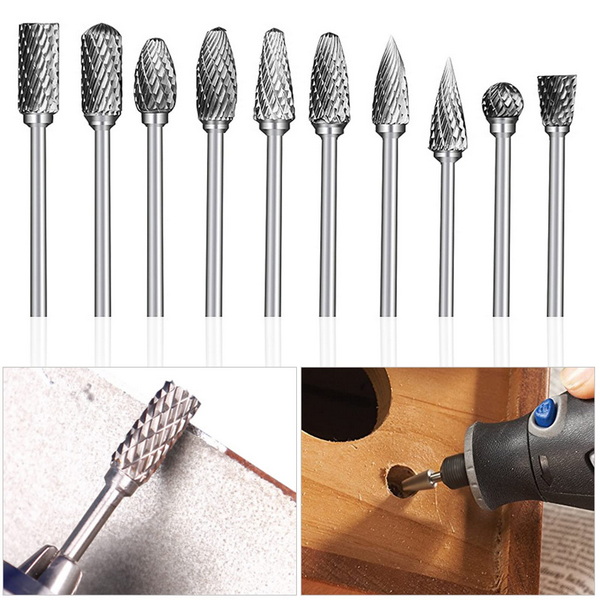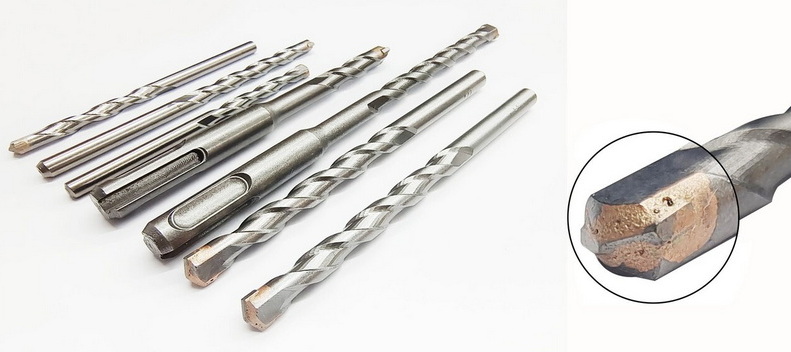Content Menu
● Introduction to Tungsten Carbide
>> Composition and Structure
● Physical Properties
● Applications of Tungsten Carbide
● Is Tungsten Carbide Metallic?
● Manufacturing Process
● Environmental and Health Considerations
● Future Developments
● Economic Impact
● Conclusion
● Frequently Asked Questions
>> 1. What is Tungsten Carbide?
>> 2. Is Tungsten Carbide an Alloy?
>> 3. What are the Primary Applications of Tungsten Carbide?
>> 4. How is Tungsten Carbide Manufactured?
>> 5. Is Tungsten Carbide Recyclable?
● Citations:
Tungsten carbide, a compound made from tungsten and carbon, is renowned for its exceptional hardness and durability, making it a crucial material in various industrial applications. However, the question of whether tungsten carbide is metallic often arises due to its unique properties and uses. This article will delve into the nature of tungsten carbide, its composition, properties, and applications, while addressing the question of its metallic nature.

Introduction to Tungsten Carbide
Tungsten carbide (WC) is a chemical compound consisting of equal parts tungsten and carbon atoms. It is not an alloy but a compound, where the tungsten and carbon atoms are chemically bonded, forming a strong covalent bond. This compound is known for its extreme hardness, ranking about 9 to 9.5 on the Mohs scale, which is comparable to corundum and only surpassed by diamond.
Composition and Structure
Tungsten carbide is primarily composed of tungsten and carbon in a 1:1 ratio. However, in industrial applications, it often includes metallic binders like cobalt or nickel to enhance its toughness and durability. These binders form a cermet (ceramic-metallic composite), combining the hardness of tungsten carbide with the ductility of metals.
Physical Properties
Tungsten carbide exhibits several impressive physical properties:
- Hardness: It is one of the hardest materials known, with a Mohs hardness of 9 to 9.5 and a Vickers hardness of about 2600.
- Density: Tungsten carbide is nearly twice as dense as steel, with a density of approximately 15.6 to 15.8 g/cm³.
- Thermal Properties: It has a high melting point of 2,870°C and a thermal conductivity of 110 W/(m·K).
- Electrical Conductivity: Despite being a compound, tungsten carbide has a low electrical resistivity comparable to some metals.
Applications of Tungsten Carbide
Tungsten carbide is widely used in various industries due to its exceptional hardness and wear resistance:
- Cutting Tools: It is used in drill bits, milling cutters, and other cutting tools due to its ability to maintain sharpness under high stress conditions.
- Jewelry: Its durability and aesthetic appeal make it popular for wedding bands and other fashion items.
- Industrial Machinery: Components like nozzles, sealing rings, and wear parts benefit from its wear resistance.
- Aerospace: Tungsten carbide is used in rocket nozzles and other high-temperature applications due to its thermal stability.
- Medical Equipment: It is used in surgical instruments and implants due to its biocompatibility and resistance to corrosion.

Is Tungsten Carbide Metallic?
While tungsten carbide includes metallic binders like cobalt or nickel, the compound itself is not considered metallic. It is a ceramic-metallic composite where the primary component, tungsten carbide, is a non-metallic compound. The metallic binders enhance its toughness but do not make the overall material metallic.
Manufacturing Process
Tungsten carbide is typically manufactured through a powder metallurgy process:
1. Powder Preparation: Tungsten carbide powder is mixed with a metallic binder.
2. Compaction: The mixture is compacted into the desired shape using methods like pressing or injection molding.
3. Sintering: The compacted mixture is heated at high temperatures (typically above 1,400°C) to form a solid composite. This process involves the diffusion of the metallic binder into the tungsten carbide grains, creating a strong bond.
Environmental and Health Considerations
The production and use of tungsten carbide have environmental and health implications:
- Environmental Impact: The mining of tungsten can have significant environmental impacts, including deforestation and water pollution. Recycling tungsten carbide can help mitigate these effects.
- Health Risks: Exposure to tungsten carbide dust during manufacturing can pose health risks, including respiratory issues. Proper safety measures are essential in handling and processing tungsten carbide.
Future Developments
Research into tungsten carbide continues to explore new applications and improvements:
- Nanotechnology: Developing nanostructured tungsten carbide could enhance its properties further, potentially leading to new applications in fields like electronics and biomedicine.
- Sustainable Production: Efforts are being made to improve the sustainability of tungsten carbide production, including more efficient recycling methods and reducing waste.
- Advanced Materials: Combining tungsten carbide with other materials to create advanced composites is an area of ongoing research, aiming to achieve even higher performance levels.
Economic Impact
The economic impact of tungsten carbide is significant due to its widespread use in critical industries:
- Global Demand: The demand for tungsten carbide is driven by its applications in manufacturing and construction, contributing to economic growth.
- Supply Chain: The supply chain for tungsten carbide involves complex logistics, from mining to manufacturing, affecting global trade dynamics.
Conclusion
Tungsten carbide is a versatile and highly durable material, but it is not metallic in nature. Its exceptional hardness and wear resistance make it indispensable in various industrial applications. Understanding its composition and properties is crucial for optimizing its use in different sectors.

Frequently Asked Questions
1. What is Tungsten Carbide?
Tungsten carbide is a chemical compound made from equal parts of tungsten and carbon atoms. It is renowned for its hardness and wear resistance, making it ideal for industrial applications.
2. Is Tungsten Carbide an Alloy?
No, tungsten carbide is not an alloy. It is a compound where tungsten and carbon atoms are chemically bonded. However, it often includes metallic binders like cobalt or nickel to enhance its properties.
3. What are the Primary Applications of Tungsten Carbide?
Tungsten carbide is primarily used in cutting tools, industrial machinery components, and jewelry due to its exceptional hardness and durability.
4. How is Tungsten Carbide Manufactured?
Tungsten carbide is manufactured through a powder metallurgy process involving mixing tungsten carbide powder with a metallic binder, compacting the mixture, and then sintering it at high temperatures.
5. Is Tungsten Carbide Recyclable?
Yes, tungsten carbide can be recycled. Worn-out tools and scrap material can be reclaimed and reused, reducing waste and conserving resources.
Citations:
[1] https://en.wikipedia.org/wiki/Tungsten_carbide
[2] https://www.reddit.com/r/askscience/comments/9whr5d/is_tungsten_carbide_an_alloy/
[3] https://www.alamy.com/stock-photo/tungsten-carbide.html
[4] https://www.retopz.com/57-frequently-asked-questions-faqs-about-tungsten-carbide/
[5] http://hardmetal-engineering.blogspot.com/2011/
[6] https://www.vedantu.com/chemistry/tungsten-carbide
[7] https://www.linde-amt.com/resource-library/articles/tungsten-carbide
[8] https://www.bangerter.com/en/tungsten-carbide
[9] https://eternaltools.com/blogs/tutorials/tungsten-carbide-an-informative-guide
[10] https://www.thermalspray.com/questions-tungsten-carbide/
[11] https://shop.machinemfg.com/tungsten-vs-tungsten-carbide-key-differences/
[12] https://shop.machinemfg.com/the-pros-and-cons-of-tungsten-carbide-a-comprehensive-guide/
[13] https://www.azom.com/properties.aspx?ArticleID=1203
[14] https://grafhartmetall.com/en/what-is-the-difference-between-ceramics-and-tungsten-carbide/
[15] https://www.zzbetter.com/new/Understanding-the-Composition-and-Properties-of-Tungsten-Carbide-and-Titanium-Carbide.html
[16] https://www.gettyimages.hk/%E5%9C%96%E7%89%87/tungsten-carbide
[17] https://www.freepik.com/free-photos-vectors/tungsten
[18] https://www.shutterstock.com/search/tungsten-metal
[19] https://www.istockphoto.com/photos/tungsten-carbide
[20] https://www.tungco.com/insights/blog/frequently-asked-questions-used-tungsten-carbide-inserts/
[21] https://www.linkedin.com/pulse/questions-composite-materials-tungsten-carbide-shijin-lei
[22] https://theartisanrings.com/pages/tungsten-rings-faqs
[23] https://www.carbideprobes.com/wp-content/uploads/2019/07/TungstenCarbideDataSheet.pdf
[24] https://www.totalmateria.com/en-us/articles/tungsten-carbide-metals-1/
[25] https://www.hmtg.de/en/was-ist-hartmetall/
[26] https://www.gettyimages.hk/%E5%9C%96%E7%89%87/tungsten-carbide?page=2
[27] http://www.tungsten-carbide.com.cn
[28] https://create.vista.com/photos/tungsten-carbide/
[29] https://www.britannica.com/science/tungsten-carbide
















